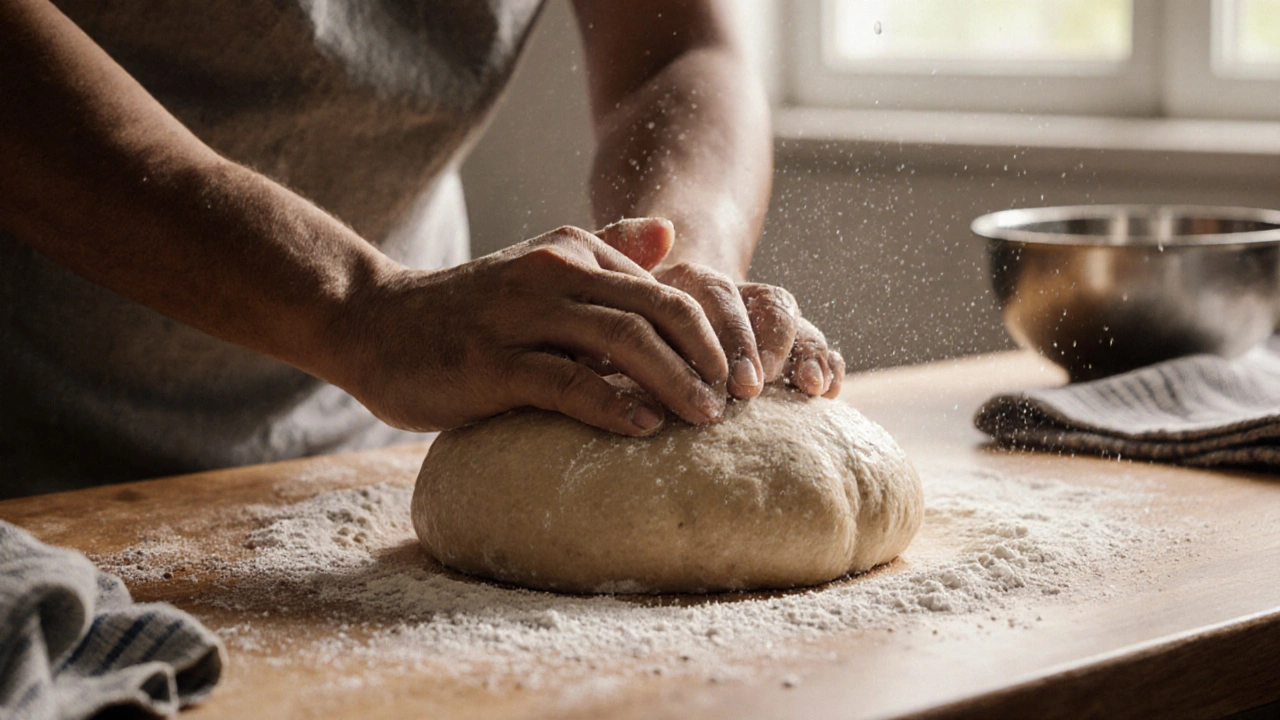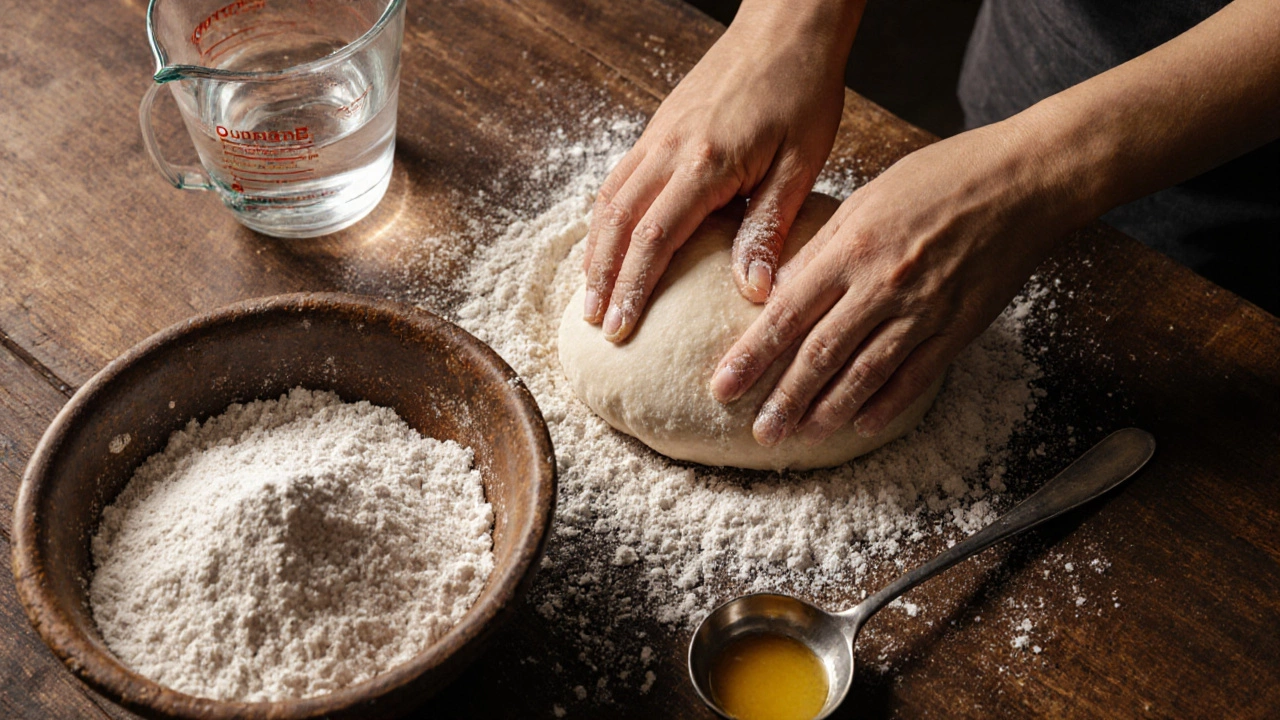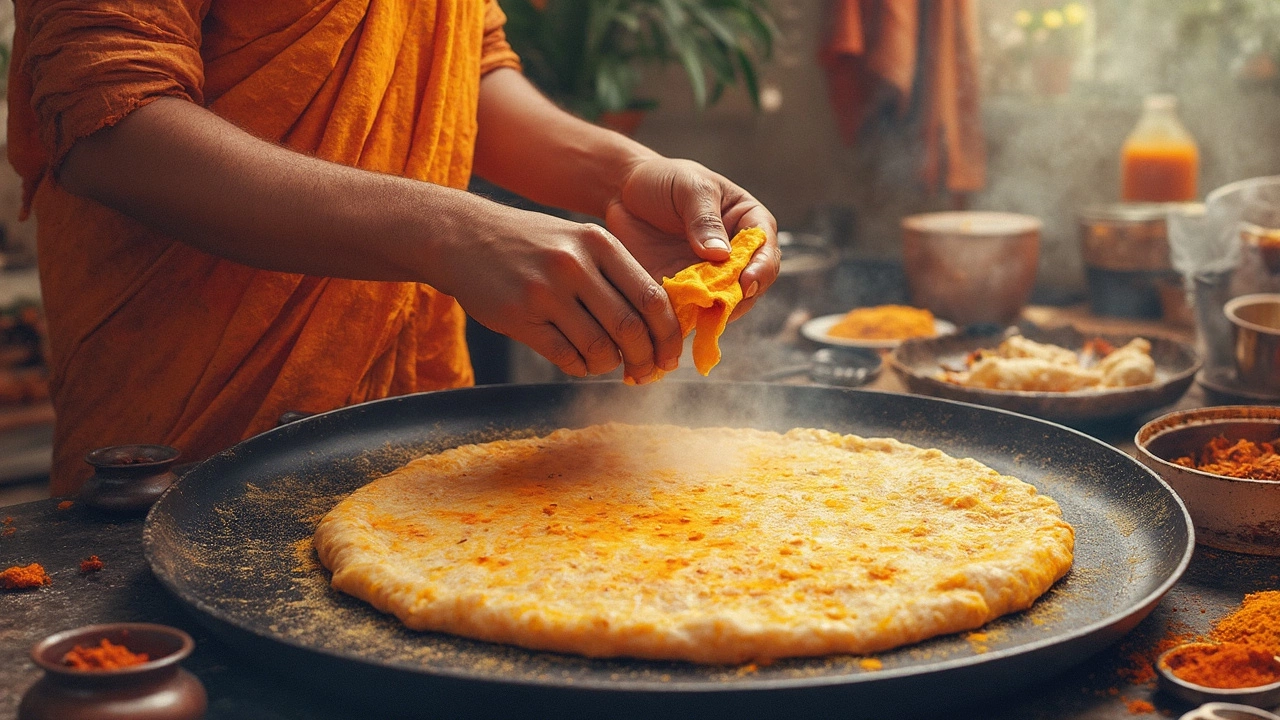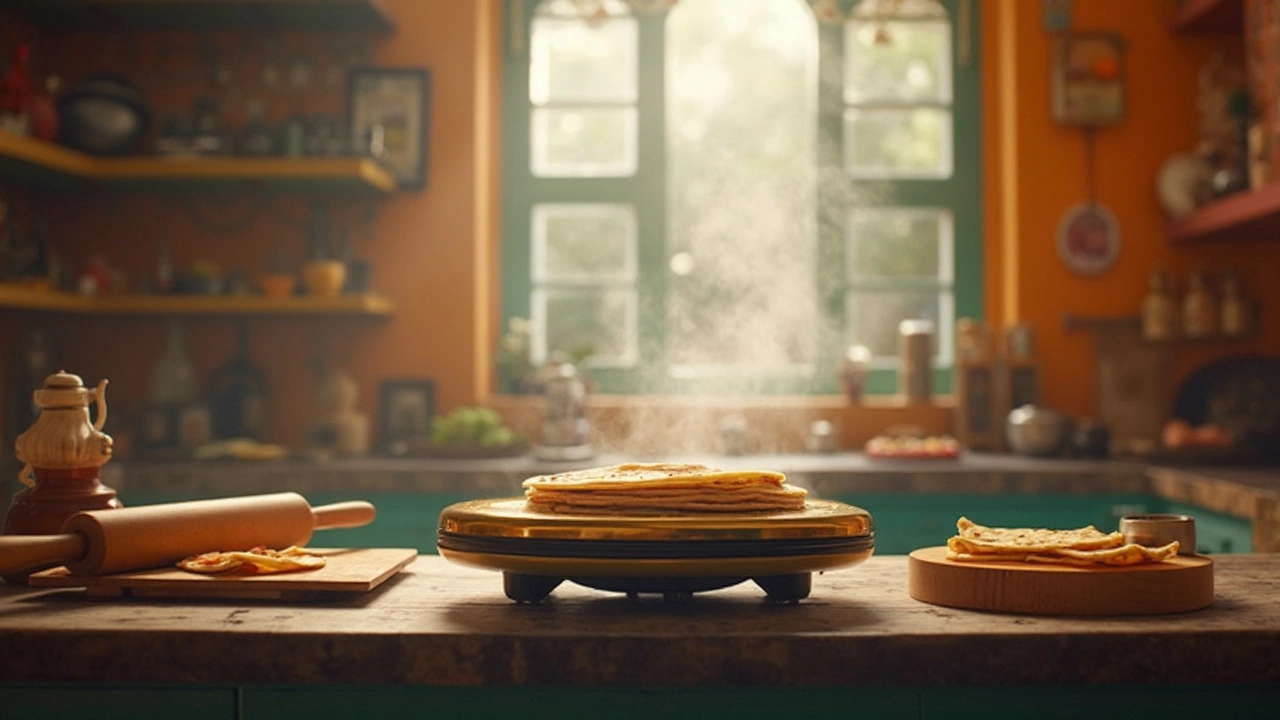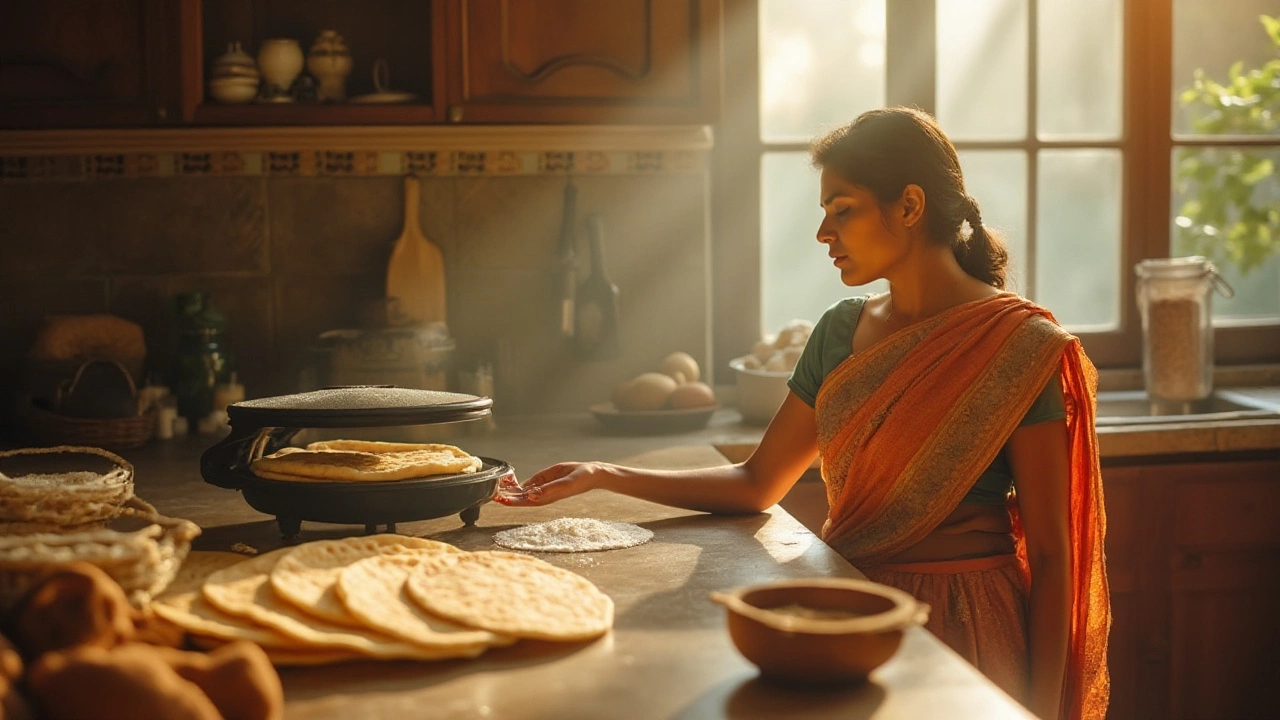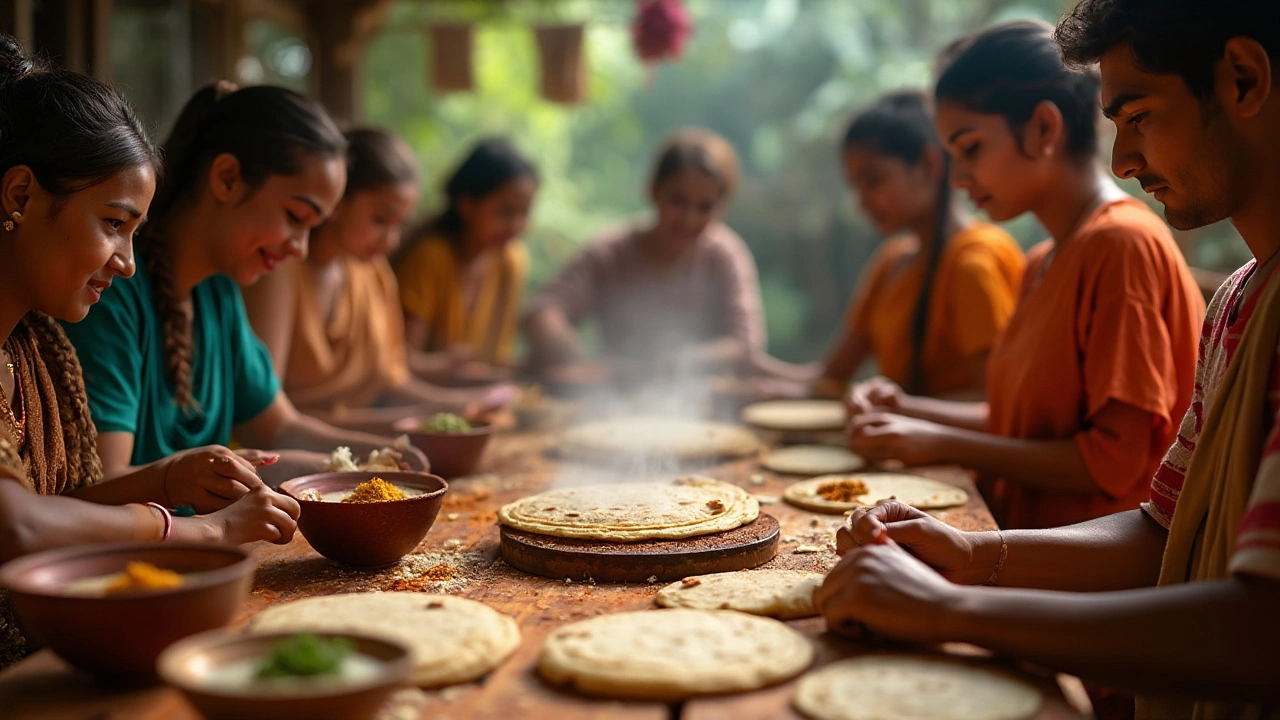Roti Recipes & Tips: Make Soft, Fluffy Rotis Every Time
Ever wondered why some rotis fall apart while others stay soft and puff up like a cloud? The answer isn’t a secret—it’s about the right ingredients, a few easy tricks, and a bit of patience. Below you’ll find the most practical tips that work in any kitchen, whether you use a tawa, a gas stove, or a roti maker.
Key Ingredients for Perfect Roti
The foundation of any good roti starts with the flour. Whole‑wheat flour (atta) gives the classic texture, but a small portion of all‑purpose flour can make the dough more elastic. Aim for a 90:10 ratio for most Indian households.
Water temperature matters too. Lukewarm water helps the gluten relax, making the dough easier to roll. Add the water slowly, mixing until the dough feels soft but not sticky. If it sticks, dust a little extra flour; if it feels dry, sprinkle a few drops of water.
Resting the dough is a game‑changer. Let it sit for at least 20‑30 minutes, covered with a damp cloth. This short break lets the gluten settle and the dough absorb moisture, which translates into a softer roti after cooking.
Practical Techniques & Tools
When it comes to cooking, the heat level decides whether your roti puffs up or stays flat. A hot tawa (about 200 °C) gives the instant steam burst that lifts the roti. Place the dough ball on the tawa, wait for tiny bubbles, then flip. Press gently with a cloth or a spatula; the pressure releases carbon dioxide trapped inside, creating that fluffy puff.
If you love a roti maker, know its limits. Inconsistent heating can make the roti hard, especially if the dough is too thick. To avoid this, roll the dough thin—about 2 mm—so the maker can heat it evenly. Adjust the knob to medium heat, and always pre‑heat the plates before placing the roti.
Even without a roti maker, you can achieve the same puffiness by using the “gas trick.” Slightly lift the lid of the pan for a few seconds right after flipping. The extra carbon dioxide in the air helps the roti rise. Just don’t leave the lid open too long, or the roti dries out.
Shape matters, but don’t stress about perfect circles. A slightly oval roti cooks just as well and often retains more softness. The goal is texture, not a flawless round shape. If you’re aiming for a round look, practice rolling from the center outwards, rotating the dough a quarter turn each time.
Finally, store your rotis right. Stack them in a clean kitchen towel and cover with another towel. The steam trapped inside keeps them soft for hours. If you need to reheat, sprinkle a few drops of water and warm on a low flame for a minute.
With these simple steps—choosing the right flour mix, resting the dough, mastering heat, and using tools wisely—you’ll consistently get soft, fluffy rotis that complement any Indian meal. Try one tip today, and soon you’ll wonder how you ever lived without it.
Why Are My Rotis Not Soft? 7 Common Mistakes and How to Fix Them
Soft rotis aren't magic-they're the result of the right dough, proper resting, and correct cooking. Learn the 7 common mistakes that make rotis hard and how to fix them for perfect, fluffy rotis every time.
How to Keep Roti From Getting Soggy - Proven Tips & Tricks
Learn step‑by‑step how to keep roti crisp-choose the right flour, master tawa cooking, store properly, and reheat without sogginess.
Unlocking the Secret to Supremely Soft Roti
Achieving perfectly soft roti can feel like a mystery, but with the right techniques and a few tricks, it's completely doable. From the type of flour to the kneading method, each step plays a crucial role in the softness of your roti. We'll explore these essential steps and provide practical tips to help you make delightful roti every time. Whether you're a beginner or seasoned cook, ensuring the right texture is within your reach.
Gas That Makes Roti Fluffy: The Secret to Perfect Puffiness
Ever wondered what makes roti puff up perfectly? It's not just the technique, but also the gas released during cooking that does the magic. Discover the role of carbon dioxide in making your roti fluffy. Plus, learn handy tips for achieving restaurant-quality puffiness at home every time you cook.
The Secret to Soft Dough: Perfecting Your Roti
Discover how to achieve soft dough for making perfect roti every time. From choosing the right flour to the magic of resting time, learn the secrets that can transform your bread-making skills. Whether you're a beginner or a seasoned cook, these tips will elevate your roti game. Get ready to impress with effortlessly soft and delicious roti.
Roti Maker Downsides: What You Need to Know
Roti makers promise convenience, but they come with their own set of challenges. From inconsistent heating to size limitations, these gadgets might not be the perfect fit for every kitchen. Learning about these drawbacks can help you decide if a roti maker is truly the right choice. Weighing these factors alongside the potential convenience can guide you to a better decision.
Why Your Roti Turns Hard in a Roti Maker: Tips for Soft and Fluffy Results
Making roti in a roti maker can sometimes lead to unexpectedly hard results. Discover the common reasons why roti becomes hard and learn tips to keep them soft and fluffy. From adjusting dough consistency to perfecting cooking techniques, this guide offers practical solutions that can help you improve your roti-making skills.
The Myth of the Perfect Round Roti: Embrace Imperfections in Roti Making
Why do we strive for perfect roundness in rotis, and does it truly matter? As home cooks from different cultural backgrounds explore their culinary heritage, the pursuit of a round roti often overshadows the actual essence of this staple. While the circular shape might carry a certain aesthetic appeal and tradition, the secret to a good roti lies more in its texture and taste. Many practical tips can help you create delicious rotis, regardless of their form.
